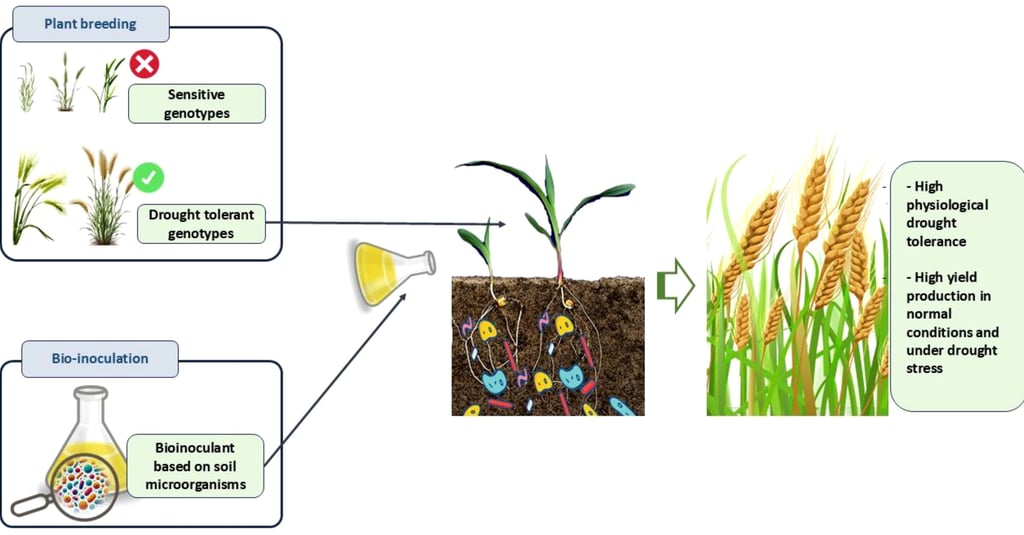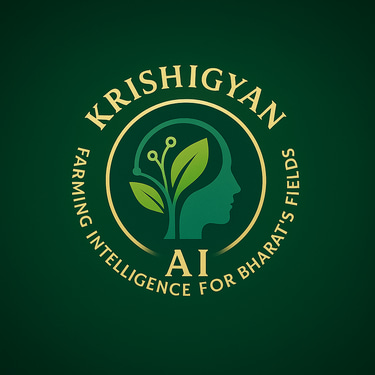Drought-Resistant Crops: Biotechnology Advances
Building Climate Resilience in Agriculture Through Science As climate change intensifies, droughts are becoming more frequent, severe, and unpredictable—posing a critical threat to global food security. In India, where over 55% of agricultural land is rain-fed, prolonged dry spells can devastate crops, livelihoods, and rural economies. To combat this challenge, scientists and agricultural innovators are turning to biotechnology, creating drought-resistant crops that not only survive but thrive in water-scarce conditions. These advances are playing a vital role in climate-smart farming, especially when supported by technologies like AI-based climate prediction models.
HawkEye
5/14/20252 min read


Need for Drought-Resilient Agriculture
Erratic monsoons, rising temperatures, and groundwater depletion have made drought a growing concern. According to the Indian Meteorological Department, at least one-third of India faces drought-like conditions annually, affecting key crops like rice, maize, pulses, and oilseeds.
Traditional mitigation strategies—such as shifting sowing dates or crop diversification—are helpful, but not always sufficient. The solution lies in developing crops that are genetically equipped to handle water stress without compromising productivity.
What Are Drought-Resistant Crops?
Drought-resistant crops are varieties that have been genetically improved—either through conventional breeding or modern biotechnology—to:
Use water more efficiently
Grow deeper or faster roots
Maintain yield under limited moisture
Reduce water loss through leaves
Activate stress-response genes during drought
These traits enable crops to survive dry conditions longer and with less damage, ensuring more stable harvests even in difficult years.
Biotechnology Approaches to Drought Resistance
Conventional Breeding
This method involves selecting naturally drought-tolerant varieties and cross-breeding them to produce resilient hybrids. While effective, it can take years to develop new lines.
Genetic Engineering (GM Crops)
Through genetic modification, scientists introduce specific drought-resistance genes (e.g., DREB1A, CspB) into crop DNA, allowing them to regulate water use and stress responses more efficiently.
CRISPR and Gene Editing
Newer tools like CRISPR-Cas9 allow precise, faster editing of genes involved in drought tolerance, without inserting foreign DNA—making it more acceptable under regulatory frameworks.
Marker-Assisted Selection
This approach uses molecular markers to speed up the breeding process by identifying which plants carry drought-tolerant traits even before field trials.
Examples of Drought-Resistant Crops in Use
Sahbhagi Dhan: A drought-tolerant rice variety developed for eastern India, showing up to 1.5x higher yields under water stress.
GM Maize (MON87460): Engineered to express cold shock protein for improved drought response.
Pigeonpea Hybrids: With deeper roots and early maturity to escape late-season droughts in dryland regions.
Sorghum and Pearl Millet Hybrids: Widely used in arid zones of Rajasthan, Telangana, and Gujarat.
The Role of AI in Supporting Drought-Resistant Crops
While biotechnology equips crops to handle drought, AI-enabled climate prediction ensures they are used most effectively:
Forecasts help farmers decide when and where to plant drought-resistant varieties.
Soil moisture mapping enables targeted irrigation for water-efficient varieties.
AI systems monitor crop health and offer real-time guidance to adjust practices during stress periods.
Together, biotechnology and AI create a powerful synergy for managing drought risk.
Conclusion
In a warming world, drought-resilient crops are no longer optional—they are essential. Advances in biotechnology are offering science-backed solutions to one of farming's oldest problems, ensuring that Indian agriculture can adapt to climate stress without sacrificing food security.
When combined with intelligent tools like AI-based weather forecasts, these crops provide a roadmap for sustainable, climate-smart farming—one that protects both farmers and ecosystems in the long run.
